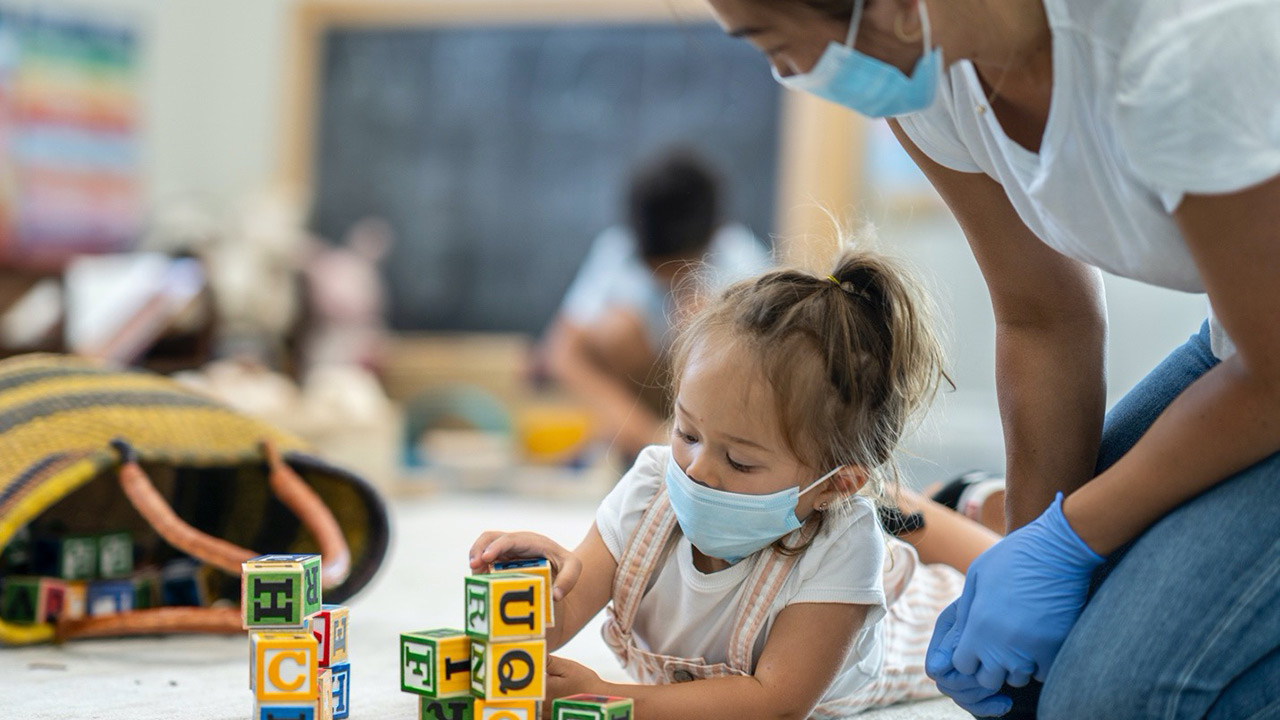Using Active Listening to Strengthen the Parent-Educator Partnership
- Written by: Samira Ali & Lynne Lafave

“Empathy fuels connection. Sympathy drives disconnection” – Brené Brown
Particularly with COVID-19, the ability to develop and/or maintain the parent-educator partnership face-to-face has become more challenging. However, a strong partnership is extremely important for the well-being of the child. When parents and educators have a common goal of supporting the health and well-being of a child, a partnership can be an effective way of attaining and maintaining goals. The child will watch, learn, and repeat the positive social interactions, effective communication skills, and teamwork shown by their supportive role models.
How to Strengthen the Partnership: Active Listening
Creating a strong partnership is a process that requires:
- Respect
- Trust
- Time
- Communication
Both educators and parents have the common goal of ensuring the safety, well-being, and development of the child but may have varying methods. To create a supportive environment, it is necessary to respect each other’s ways of life, beliefs, and cultures. Being honest and open about any concerns that may arise as they happen allows for conflicts or issues to be addressed immediately. It is also important to note that parents possess a wide variety of knowledge and experience that should be respected.
The quality of parent-educator interactions is far more important than the quantity of the interactions; simply saying hello and goodbye every day will not strengthen the partnership as much as a meaningful conversation. When having a conversation, use active listening to understand the speaker’s message. Active listening is a communication technique that requires the listener to give the speaker their full attention; it demonstrates genuine interest in the speaker’s concerns and provides an opportunity to understand, empathize, and acquire more information.
LAFF Strategy to Promote Active Listening1
L – listen, empathize, and communicate respect
- The main goal is to better understand the speaker’s perspective, not to agree or disagree. Ask questions like, “I’m sorry to hear that this has been a problem. Can you tell me more (about the situation)?”
A – ask questions and ask permission to take notes
- Ask open-ended questions to learn more about the speaker’s concern. Taking notes helps you track progress and helps communicate you are interested in the parent’s opinion. Note-taking also requires you to actively consider what is being discussed.
F – focus on the problems
- Shift from asking questions to establishing an understanding. If you took notes, review notes with the parent and ask for additional comments and clarifications they may have. Finalizing the notes with the parent will demonstrate that you have been actively listening to the parent’s concerns.
F – find the first step
- Now that both parties have a good understanding of the situation, you can brainstorm and decide what the first steps will be to find a solution. The term zone of control refers to the idea that educators and parents work in different zones of the child’s life, and therefore are able to influence the child differently. Make a plan and agree on how you and the parent will work towards the goal within your different zones.
Realistically, not everyone will see eye-to-eye all the time, and communication challenges are common. Taking the time to develop a strong parent-educator partnership is essential to building a strong support system for the child.
References
-
McNaughton, D., Hamlin, D., McCarthy, J., Head-Reeves, D., & Schreiner, M. (2007). Learning to listen: Teaching an active listening strategy to preservice education professionals. Topics in Early Childhood Special Education, 27(4), 223-231.